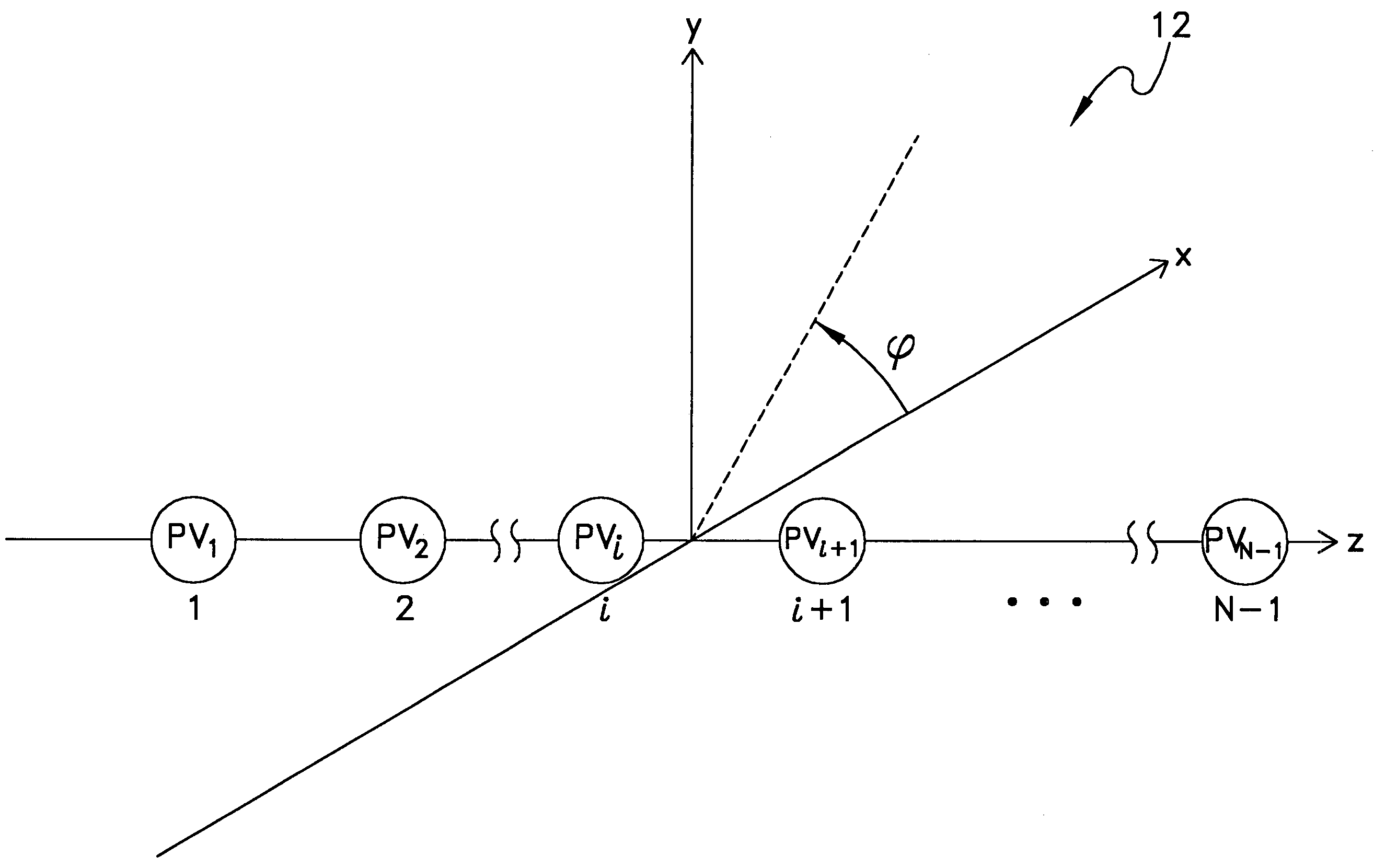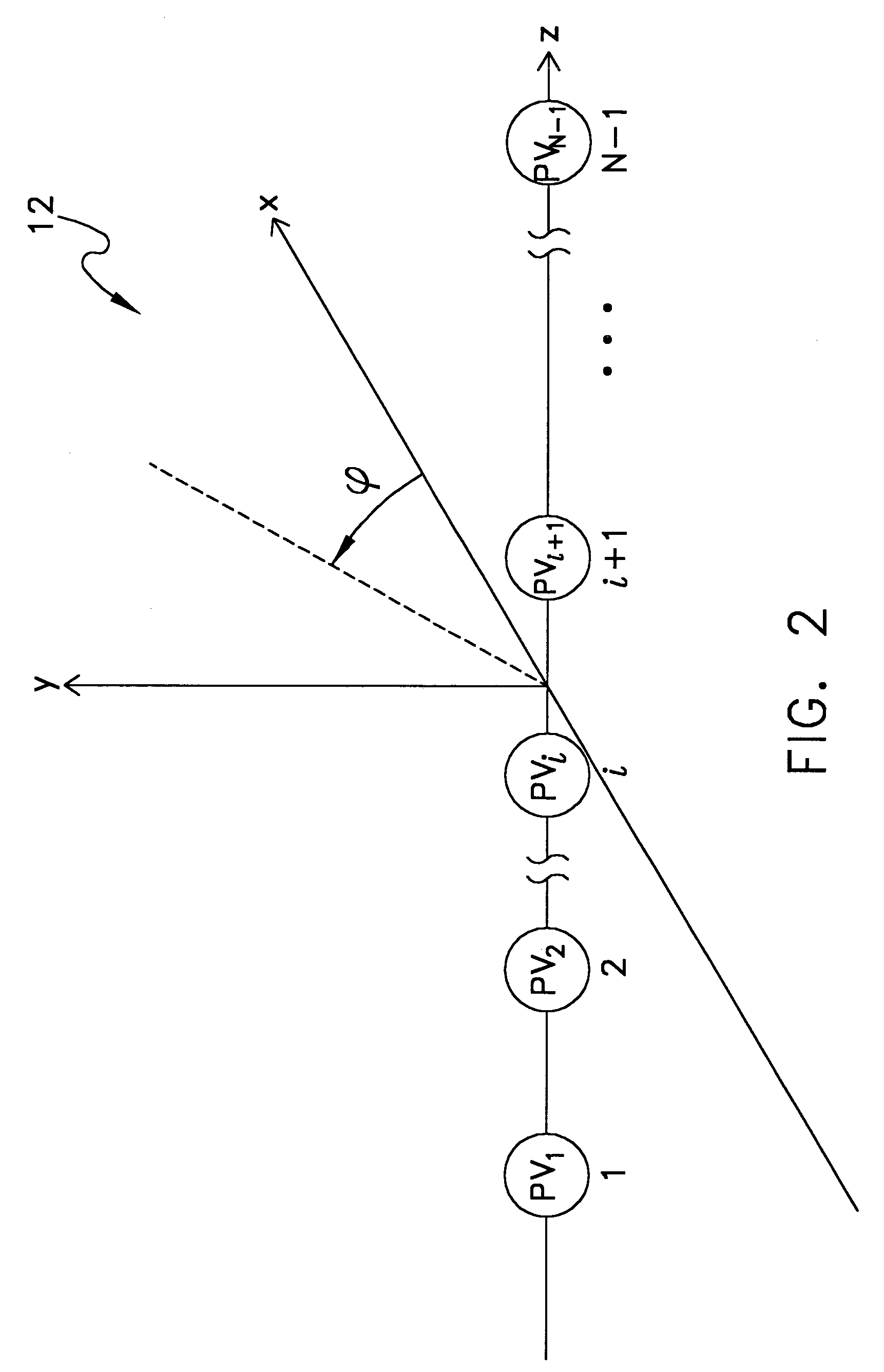Nonlinear techniques for pressure vector acoustic sensor array synthesis
a pressure vector and array technology, applied in the field of signal processing, can solve the problems of inability to achieve a narrow acoustic beam width without having a large acoustic aperture, limited detection of acoustic waves by sensors, etc., and achieve the effect of narrow acoustic beam width and small acoustic apertur
- Summary
- Abstract
- Description
- Claims
- Application Information
AI Technical Summary
Benefits of technology
Problems solved by technology
Method used
Image
Examples
Embodiment Construction
[0020]Referring now to FIG. 1 there is illustrated a line array 10 of N pressure sensors P1 to PN along a spatial axis labeled x. The angle, φ, is the spatial angle measured away from the x axis used to define the incident direction of an acoustic plane wave originating from a far field source. In the prior art, the conventional method of calculating the array directivity of array 10 is to first define the variable X as:
X=0.5kd cos(φ)
where k is the wave number, which is 2*π*f / c, where f is the frequency, and c is the sound speed in the medium, which could be air or water, and d is the separation distance between the neighboring sensor elements. The variable X is proportional to the spatial phase of the output signal of the individual pressure sensors P1 to PN. The next step is to define a mathematical series of values corresponding to the number of pressure sensors as:
[0021][1, cos X, cos 2X, cos 3X, . . . , cos((N−1)X)]
The next step is to perform weighting or shading on the series ...
PUM
 Login to View More
Login to View More Abstract
Description
Claims
Application Information
 Login to View More
Login to View More - R&D
- Intellectual Property
- Life Sciences
- Materials
- Tech Scout
- Unparalleled Data Quality
- Higher Quality Content
- 60% Fewer Hallucinations
Browse by: Latest US Patents, China's latest patents, Technical Efficacy Thesaurus, Application Domain, Technology Topic, Popular Technical Reports.
© 2025 PatSnap. All rights reserved.Legal|Privacy policy|Modern Slavery Act Transparency Statement|Sitemap|About US| Contact US: help@patsnap.com



